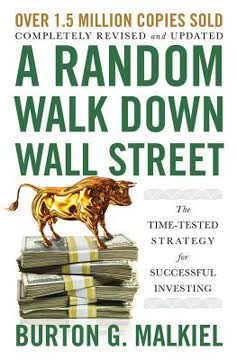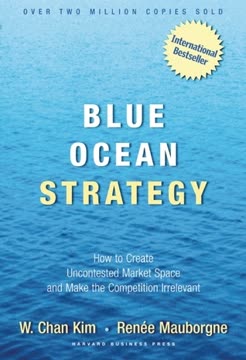نکات کلیدی
1. اسرار ثروت: کلید انباشت ثروتهای عظیم در طول تاریخ
"پشت تقریباً هر ثروت بزرگ یک 'راز ثروت' نهفته است—یک تکنیک پولسازی که، اگرچه لزوماً ناپاک نیست، اما چیزی نیست که بخواهید روی غلات صبحانهتان بپاشید، به یک کودک برای بازی بدهید، یا در گفتگوی معمولی با یک عضو روحانیت دربارهاش صحبت کنید."
تعریف اسرار ثروت. اینها استراتژیهایی هستند که توسط فوقثروتمندان برای انباشت و حفظ ثروتهایشان استفاده میشوند. آنها اغلب شامل موارد زیر هستند:
- بهرهبرداری از خلأهای قانونی
- استفاده از نفوذ سیاسی
- ایجاد یا حفظ انحصارها
- دستکاری شرایط بازار
دیدگاه تاریخی. اسرار ثروت در طول تاریخ، از روم باستان تا دره سیلیکون امروزی، به کار گرفته شدهاند. آنها اغلب شامل موارد زیر هستند:
- غلبه بر رقابت بازار
- بهرهبرداری از مزایای نظارتی
- استفاده از فناوریها یا بازارهای نوظهور
ملاحظات اخلاقی. اگرچه لزوماً غیرقانونی نیستند، اسرار ثروت اغلب در مناطق خاکستری اخلاقی عمل میکنند و سوالاتی درباره انصاف و تأثیر اجتماعی ایجاد میکنند.
2. روم باستان: بهرهبرداری از قدرت سیاسی برای منافع شخصی
"مارکوس کراسوس ثروتش را از طریق 'آتش و غارت' به دست آورد."
دستکاری سیاسی. کراسوس، یکی از ثروتمندترین شهروندان روم باستان، از موقعیت سیاسی خود برای انباشت ثروت از طریق:
- دستکاری فهرستهای مصادره
- تصرف اموال مخالفان سیاسی
- بهرهبرداری از بحرانهای عمومی، مانند آتشسوزیها
مقیاس ثروت. ثروت کراسوس به 170 میلیون سسترس (حدود 3.7 میلیارد دلار امروزی) تخمین زده میشد، که به او اجازه میداد:
- خرید املاک و بردگان وسیع
- تأمین مالی کمپینهای سیاسی
- در نهایت چالش برای کنترل روم
میراث و سقوط. راز ثروت کراسوس در نهایت منجر به:
- افزایش ناپایداری سیاسی در روم
- سقوط خود او در یک کمپین نظامی ناموفق
- نمونهای ماندگار از چگونگی استفاده از قدرت سیاسی برای منافع شخصی
3. بارونهای راهزن: انحصار صنایع در آمریکا قرن نوزدهم
"بارونهای راهزن این دوره از رقابت بیرحمانه را به پایان میرساندند، در حالی که در این فرآیند خود را به طرز شگفتانگیزی ثروتمند میکردند."
شخصیتهای کلیدی. بارونهای راهزن شامل:
- جان دی. راکفلر (نفت)
- اندرو کارنگی (فولاد)
- جی. پی. مورگان (مالی)
- کورنلیوس وندربیلت (راهآهن)
تاکتیکهای انحصاری. این صنعتگران از استراتژیهای مختلفی برای تسلط بر صنایع خود استفاده کردند:
- یکپارچگی عمودی و افقی
- قیمتگذاری تهاجمی
- تشکیل کارتل
- لابیگری سیاسی و رشوه
تأثیر و میراث. اقدامات بارونهای راهزن منجر به:
- تمرکز بیسابقه ثروت
- توسعه سریع صنعتی در ایالات متحده
- در نهایت، قانونگذاری ضد انحصار و افزایش نظارت
4. بخش بانکی: استفاده از تضمینهای دولتی برای سود
"بیش از حد بزرگ برای شکست هنوز به وضوح مشهود بود و همچنان به قماربازان بیش از حد پرداخت میکرد."
تضمینهای دولتی. بخش بانکی از حمایت ضمنی و صریح دولت بهرهمند میشود:
- بیمه سپرده
- تسهیلات وامدهی بانک مرکزی
- کمکهای مالی در زمان بحرانهای مالی
انگیزههای ریسکپذیری. این تضمینها خطر اخلاقی ایجاد میکنند:
- بانکها میتوانند ریسکهای بیش از حد بپذیرند
- سودها خصوصیسازی میشوند، زیانها اجتماعیسازی میشوند
- منجر به بحرانهای مالی مکرر میشود
پاسخ نظارتی. تلاشها برای مهار این شیوهها شامل:
- افزایش الزامات سرمایه
- تست استرس
- برنامهریزی حل و فصل ("وصیتنامههای زنده")
با این حال، مشکل اساسی بیش از حد بزرگ برای شکست تا حد زیادی حل نشده باقی مانده است.
5. بازارهای نوظهور: مرز جدید برای میلیاردرها
"اگر هدف شما ثروتی در مقیاس وسیع در روزگار مدرن است، بهتر است به یک کشور فقیر نقل مکان کنید."
فرصت در هرج و مرج. بازارهای نوظهور به دلیل:
- رشد سریع اقتصادی
- محیطهای نظارتی ضعیف
- خصوصیسازی داراییهای دولتی
فرصتهای منحصر به فردی برای ساخت ثروت ارائه میدهند.
مطالعه موردی: دیروبهی آمبانی. بنیانگذار صنایع ریلاینس در هند این راز ثروت را به نمایش میگذارد:
- بهرهبرداری از سیستم "راج مجوز" هند
- ساختن موقعیت مسلط در صنایع متعدد
- تبدیل شدن به یکی از ثروتمندترین مردان جهان
روند جهانی. ظهور میلیاردرهای بازارهای نوظهور در حال تغییر چشمانداز ثروت جهانی است:
- کشورهایی مانند چین، روسیه و هند اکنون خانه بسیاری از میلیاردرها هستند
- اغلب از کشورهای توسعهیافته در تعداد افراد با ثروت خالص فوقالعاده بالا پیشی میگیرند
6. بخش فناوری: مالکیت فکری و اثرات شبکه
"مایکروسافت یک شرکت مالکیت فکری است. ما هیچ کارخانهای با اهمیت یا منابع طبیعی نداریم. در واقع، ما هیچ دارایی فیزیکی از هر نوعی که برای موفقیت شرکت مهم باشد نداریم."
مالکیت فکری به عنوان راز ثروت. شرکتهای فناوری از پتنتها، حقتکثیرها و علائم تجاری برای:
- ایجاد موانع ورود
- ایجاد موقعیتهای مسلط در بازار
- ایجاد جریانهای درآمدی مکرر
استفاده میکنند.
اثرات شبکه. بسیاری از محصولات فناوری با افزایش تعداد کاربران ارزش بیشتری پیدا میکنند:
- سیستمعاملها (مثلاً ویندوز)
- پلتفرمهای رسانههای اجتماعی (مثلاً فیسبوک)
- بازارهای تجارت الکترونیک (مثلاً آمازون)
مطالعه موردی: مایکروسافت. بیل گیتس ثروت خود را با:
- ایجاد و به شدت محافظت از حقوق مالکیت فکری
- استفاده از اثرات شبکه برای تسلط بر بازار سیستمعاملهای رایانه شخصی
- استفاده از این تسلط برای گسترش به بازارهای نرمافزاری دیگر
ساخت.
7. سرمایهداری انحصاری: مسیر مدرن به سوی ثروت افراطی
"سرمایهداری انحصاری بازگشته بود—و بدون هیچیک از مقررات سود یا قیمت که به خدمات عمومی اعمال میشد."
ظهور مجدد انحصارها. علیرغم تلاشهای ضد انحصار، انحصارهای مدرن به اشکال جدیدی ظهور کردهاند:
- غولهای فناوری (گوگل، آمازون، فیسبوک)
- انحصارهای مبتنی بر مالکیت فکری
- انحصارهای طبیعی در صنایع اثر شبکه
چالشهای نظارتی. رویکردهای سنتی ضد انحصار با این انحصارهای جدید دست و پنجه نرم میکنند:
- دشواری در تعریف بازارهای مرتبط
- مزایای مصرفکننده از پلتفرمهای بزرگ
- تغییر سریع فناوری
تمرکز ثروت. این انحصارهای مدرن منجر به:
- انباشت بیسابقه ثروت توسط بنیانگذاران و مدیران فناوری
- افزایش نابرابری درآمد
- درخواست برای رویکردهای نظارتی جدید و توزیع مجدد ثروت
آخرین بهروزرسانی::
FAQ
What's Wealth Secrets of the One Percent about?
- Focus on Extreme Wealth: The book explores how the wealthiest individuals throughout history have amassed fortunes, emphasizing that extraordinary wealth often requires more than just hard work.
- Historical Analysis: It examines historical figures, from ancient Romans to modern billionaires, to identify common "wealth secrets" that have enabled their success.
- Critique of Capitalism: The book critiques growing income inequality and helps readers understand the dynamics and ethical implications of wealth creation.
Why should I read Wealth Secrets of the One Percent?
- Understanding Wealth Dynamics: It offers insights into the economic and social structures that support extreme wealth, demystifying the processes behind becoming extraordinarily rich.
- Historical Context: By examining historical figures, readers can learn from their successes and failures, gaining a deeper understanding of wealth accumulation.
- Critical Perspective: The book encourages critical thinking about wealth and capitalism, prompting discussions about ethics and wealth inequality.
What are the key takeaways of Wealth Secrets of the One Percent?
- Wealth Secrets Defined: The book introduces "wealth secrets," strategies that allow individuals to overcome market competition and achieve extraordinary wealth.
- Historical Patterns: It identifies patterns in how the superrich have historically achieved their wealth, suggesting these methods are replicable.
- Market Imperfections: Vast fortunes often arise from exploiting market imperfections, creating opportunities for those willing to take risks.
What are the best quotes from Wealth Secrets of the One Percent and what do they mean?
- "Behind almost every great fortune is a 'wealth secret'.": This encapsulates the book's thesis that extraordinary wealth results from specific strategies or advantages.
- "In a well-functioning market economy, one should not be able to make hundreds of millions of dollars year after year.": This highlights the author's view that extreme wealth indicates market failures or manipulations.
- "If getting filthy rich was easy, anyone could do it.": This reminds readers that wealth creation is complex and challenging.
How does Wealth Secrets of the One Percent define wealth secrets?
- Exclusive Strategies for Wealth: Wealth secrets are unique strategies that enable individuals to accumulate and maintain wealth, often hidden in complex regulations or economic principles.
- Historical and Contemporary Context: The book explores wealth secrets across different eras, showing their evolution but fundamental ties to economic principles.
- Practical Application: Readers are encouraged to identify and apply these wealth secrets in their own lives for better financial outcomes.
What role does government regulation play in wealth accumulation according to Wealth Secrets of the One Percent?
- Barrier to Entry: Government regulations can create barriers for new businesses, allowing established firms to maintain dominance.
- Opportunities for the Savvy: Astute entrepreneurs can leverage these regulations to their advantage, as seen with figures like Dhirubhai Ambani.
- Political Influence: Political connections can significantly enhance a business's ability to thrive within a regulated environment.
How does Wealth Secrets of the One Percent critique capitalism?
- Income Inequality: The book addresses the growing divide between the wealthy and the rest of society, questioning the sustainability and fairness of capitalism.
- Legitimacy of Wealth: It challenges readers to consider the legitimacy of wealth accumulated by exploiting market failures or unethical practices.
- Call for Reflection: Readers are prompted to reflect on their financial aspirations and the means by which they pursue them.
What historical figures are analyzed in Wealth Secrets of the One Percent?
- Marcus Crassus: His use of proscriptions in ancient Rome illustrates the intersection of politics and wealth.
- John D. Rockefeller: His monopolistic strategies in the oil industry serve as a case study in leveraging scale and political connections.
- Andrew Carnegie: His transition to large-scale steel production showcases the evolution of wealth secrets in the industrial age.
What methods does Sam Wilkin suggest for achieving wealth in Wealth Secrets of the One Percent?
- Identify Market Imperfections: Look for gaps in the market to exploit inefficiencies or weaknesses.
- Leverage Political Connections: Building relationships with influential figures can provide significant business advantages.
- Focus on Scale: Achieving economies of scale is crucial for long-term success and market dominance.
How does Wealth Secrets of the One Percent relate to modern wealth creation?
- Relevance of Wealth Secrets: The principles are applicable to contemporary entrepreneurs and investors seeking to build wealth.
- Critique of Current Practices: The book encourages critical assessment of current wealth accumulation methods and their ethical implications.
- Inspiration for Aspiring Wealthy Individuals: Historical examples and actionable insights guide those looking to achieve financial success.
What challenges do the superrich face, according to Wealth Secrets of the One Percent?
- Maintaining Wealth: Wealthy individuals often struggle to maintain their fortunes due to competition or changing market conditions.
- Public Perception: The superrich face scrutiny and criticism regarding the legitimacy of their wealth.
- Regulatory Pressures: Increased regulation and scrutiny can complicate efforts to maintain or grow wealth.
How can I apply the lessons from Wealth Secrets of the One Percent to my own financial goals?
- Research Market Opportunities: Identify areas to exploit market inefficiencies or gaps with innovative products or services.
- Build a Network: Cultivate relationships with influential individuals for guidance and support in your ventures.
- Focus on Growth: Aim to scale your business to achieve economies of scale, enhancing profitability and reducing competition.
نقد و بررسی
کتاب رازهای ثروت یک درصد با نظرات متفاوتی مواجه شد. بسیاری از خوانندگان مثالهای تاریخی را جالب یافتند، اما عنوان گمراهکننده و سبک نوشتاری طولانی و پرپیچوخم کتاب را مورد انتقاد قرار دادند. برخی از بینشها دربارهی انحصارها و انباشت ثروت قدردانی کردند، در حالی که دیگران احساس کردند که کتاب فاقد مشاورههای عملی است. این کتاب به خاطر تاریخ اقتصادیاش ستایش شد، اما به خاطر خستهکننده بودن و عدم تحقق وعدهی افشای "رازها" برای پیوستن به یک درصد انتقاد شد. بهطور کلی، خوانندگان آن را آموزنده اما دارای نقص دانستند و میانگین امتیاز ۳.۷۱ از ۵ را به آن دادند.
Similar Books













